Wellness
Clinic Wellness Team. A key factor to spine or back pain conditions is staying healthy. Overall wellness involves a balanced diet, appropriate exercise, physical activity, restful sleep, and a healthy lifestyle. The term has been applied in many ways. But overall, the definition is as follows.
It is a conscious, self-directed, and evolving process of achieving full potential. It is multidimensional, bringing together lifestyles both mental/spiritual and the environment in which one lives. It is positive and affirms that what we do is, in fact, correct.
It is an active process where people become aware and make choices towards a more successful lifestyle. This includes how a person contributes to their environment/community. They aim to build healthier living spaces and social networks. It helps in creating a person’s belief systems, values, and a positive world perspective.
Along with this comes the benefits of regular exercise, a healthy diet, personal self-care, and knowing when to seek medical attention. Dr. Jimenez’s message is to work towards being fit, being healthy, and staying aware of our collection of articles, blogs, and videos.
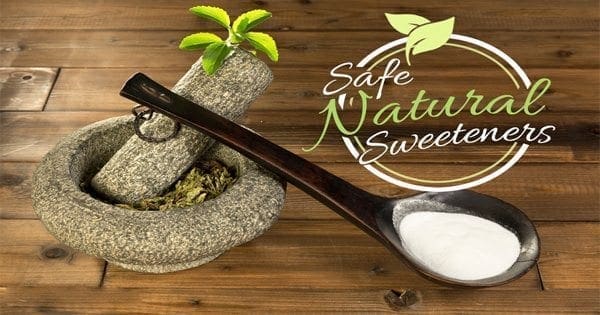
by Dr Alex Jimenez DC, APRN, FNP-BC, CFMP, IFMCP | Diets, Integrative Medicine, Ketogenic Diet Explained, Nutrition, Weight Loss, Wellness
Sweet foods were a rare delicacy for our ancient ancestors.� Today, we have an unlimited supply of sugary foods and beverages at our disposal.� Natural sweeteners can be used effectively in moderation to provide the sweetness that most people crave.� Here are the best natural sweeteners ranked in order based on low glycemic index and additional health benefits.
Every living creature is designed to run off of a simple sugar called glucose.� It is the primary unit in the study of metabolism.� However, there are certainly dangers involved with consuming too much glucose. Those dangers mostly involve elevated blood sugar and insulin which trigger fat accumulation, cellular inflammation and insulin resistance.
Fructose is another simple sugar that is found in nature within fruits, honey and plant/tree nectar.� This is metabolized differently than glucose and can cause even more hazardous effects when consumed in excess.� Most plant based sweeteners such as agave nectar are extremely high in fructose.� Agave was thought to be a good sweetener until health researchers found out the dangers of it�s nearly 80% fructose content.
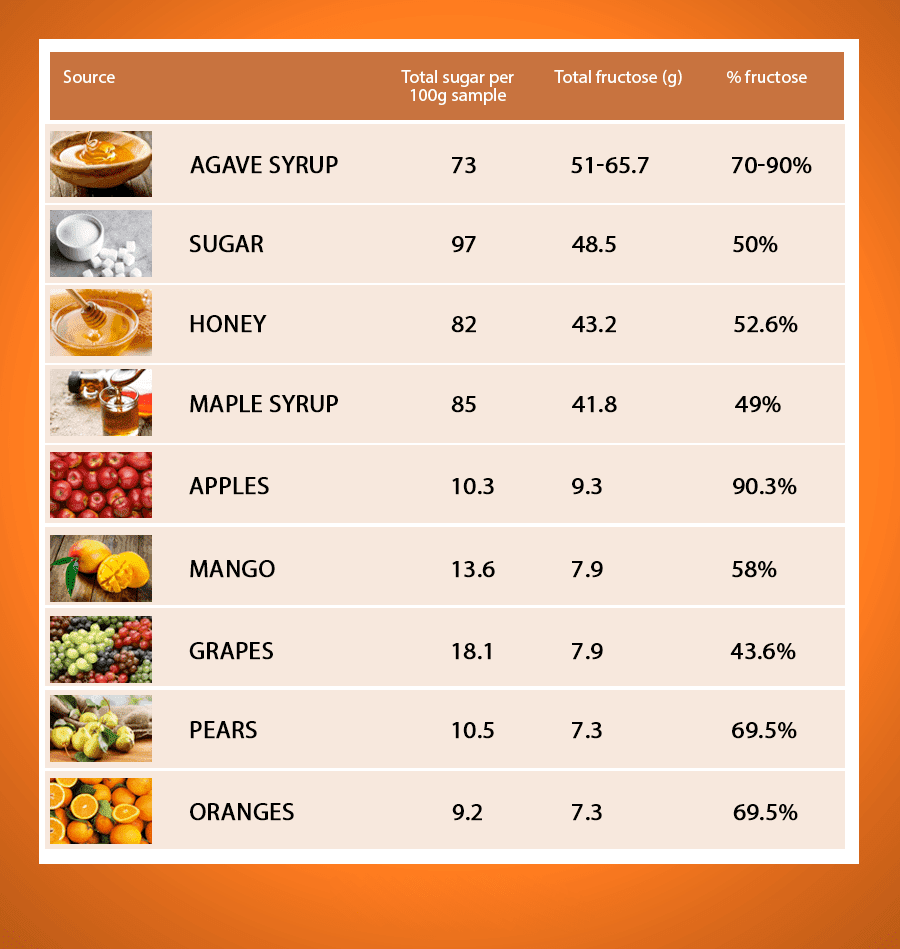
1. Stevia:
Processed from the leaf of the stevia plant which is native to South America.� This herb derivative has no effect on blood sugar, insulin signaling and triglyceride formation.�� It develops most of its sweetness from glycosides called stevioside and rebaudioside.� �These compounds are 250-300 times sweeter than sucrose and they have the ability to withstand heat and have a long shelf life (1, 2).
Studies have even shown the stevia leaf to have beneficial effects at improving cellular insulin sensitivity and reduce the risk of type II diabetes and high blood pressure (3, 4). �My favorite stevia to use personally is Sweet Leaf stevia in the liquid dropper here� I like this brand because it is pure stevia, without any sugar alcohols or other sweeteners added. � Most people also like the flavor better as it has less of an aftertaste.
You can find it in a variety of flavors including vanilla, chocolate, hazelnut, cinnamon, English toffee, grape�and lemon. �If you are noticing an unpleasant aftertaste with the Sweet Leaf brand, than try adding a little bit of sea salt or pink salt (to taste � not too salty) to your recipe using the stevia and this can help remove the after taste. �I have seen a lot of people who once �hated� stevia, completely change their opinion after adding the salt.

2. �Monk Fruit or Lo Han Extract:
Lo Han Extract is also called monk fruit. �The monk fruit plant grows native in Southern China/Northern Thailand.� Lo Han has a very low glycemic index and low sugar content.� It gets the majority of its sweetness from a glycoside nutrient called mogrosides.
These mogrosides are 300 times sweeter than sugar and act as anti-oxidants that have shown abilities to inhibit cancer cell formation (5, 6).� This is a wonderful sweetener but it can be hard to find and expensive. �I like Pure Monk Fruit from Julian Bakery because it is the only one I found without other sweeteners such as erythritol.
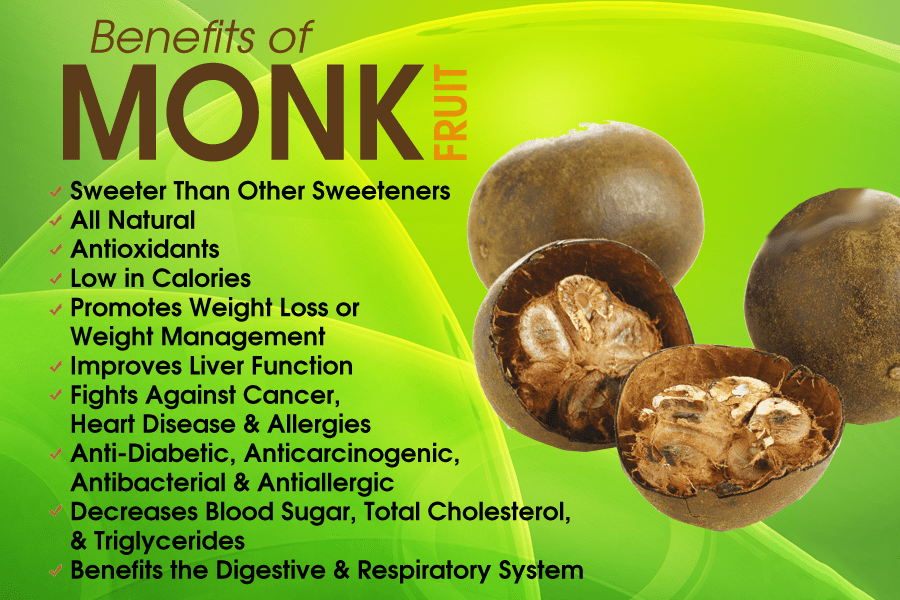
3. �Yacon Syrup:
Yacon syrup is extracted from the roots of the Yacon plant which�grows throughout the Andes mountains in South America. �This plant has a long history as a powerful food that has been eaten and used for medicinal purposes in South America.
Yacon syrup is rich in prebiotic fibers (roughly 40-50%) called inulin and fructooligosacchardes (FOS) which are undigestable by the body but feed healthy gut bacteria (7). � Yacon does contain a small amount of sugar through fructose, glucose and sucrose but the rich fiber within it makes it a very low-glycemic sweetener. � The use of Yacon syrup has been shown to reduce obesity and insulin resistance (8).
I like Blue�Lily�s organic Yacon syrup�which is lower glycemic than maple syrup and a great pre-biotic for the gut.


Call Today!
4. �Coconut Nectar:
This is a very low glycemic liquid sweetener derived from the liquid sap of the coconut blossoms. �It is also called coconut sugar. �The glycemic index is 35 making it one of the lowest of natural sweeteners.
Also, the fructose levels are very low at 10% and it contains a wide variety of anti-oxidants, minerals and other nutrients that enhance blood sugar stability.� It can be found in health food stores but is somewhat pricey. �Although I really don�t use coconut nectar or coconut sugar, one of the better brands is Coconut Secret here
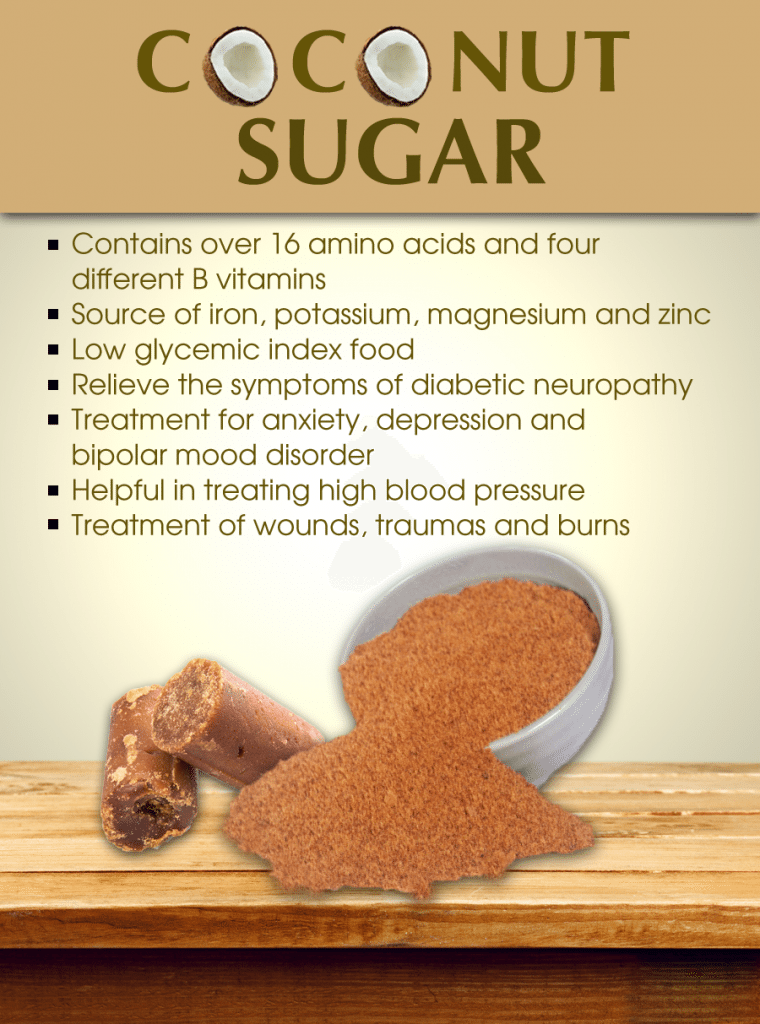
5. �Organic, Raw Honey:
This superfood does have an effect on blood sugar and contains approximately 53% fructose so one should only consume this in moderation.� Honey contains a wide array of trace minerals such as calcium, iron, zinc, potassium, phosphorous, magnesium, copper, chromium, manganese and selenium.� These nutrients are critical for healthy cellular insulin sensitivity and blood sugar balance.
Raw honey is also extremely rich in anti-oxidants and natural enzymes.�� Honey contains flavonoid anti-oxidants such as pinocembrin and pinostrobin that help reduce oxidative stress in the body and promote better enzyme activity (9). �Finding local raw honey is the best as it contains small amounts of local flower pollen which enhances our bodies ability to adapt to this potential allergen.
It is best to find a local producer so you can get the best locally developed raw honey. �If you cannot find a honey producer in your area, than I would use HoneyTrees here
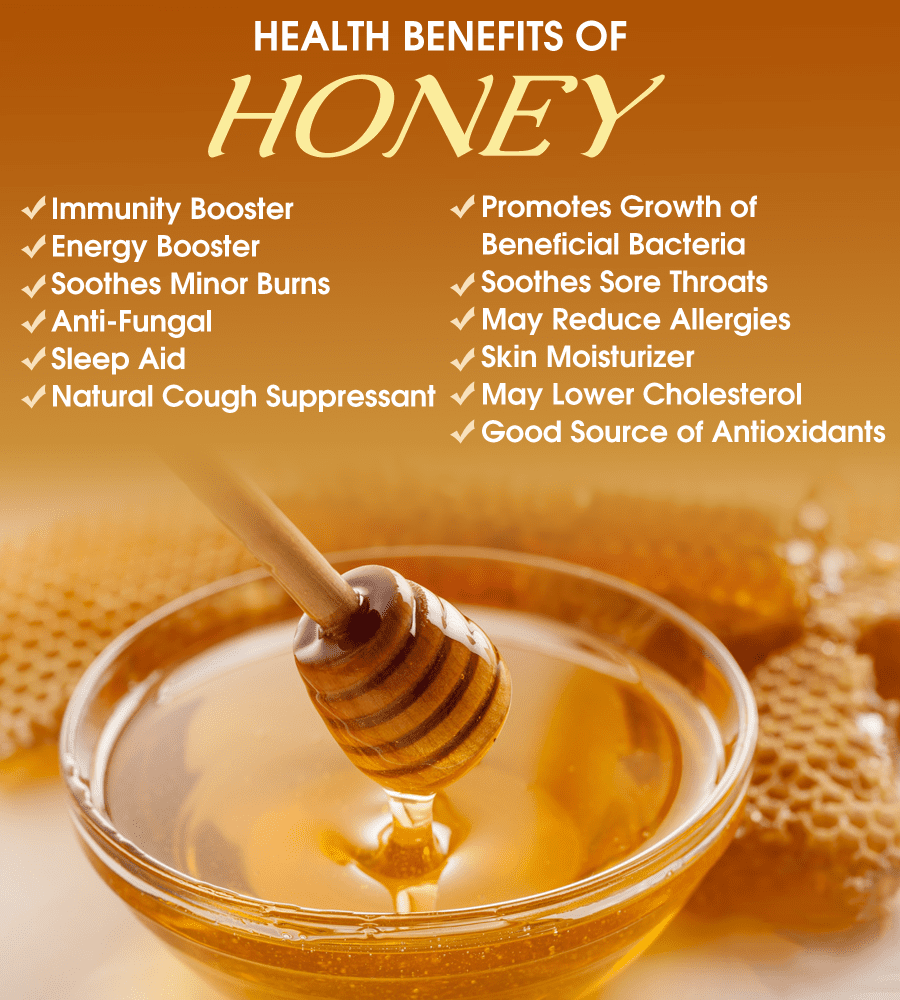
6. �Organic Blackstrap Molasses:
Molasses is a byproduct of the processing of sugar.� It does have an effect on glycemic index and must only be consumed in moderation.� Blackstrap molasses is a very rich source of iron, copper, manganese, potassium, magnesium and selenium.
One of the better brands on the market is Plantation Organic blackstrap molasses
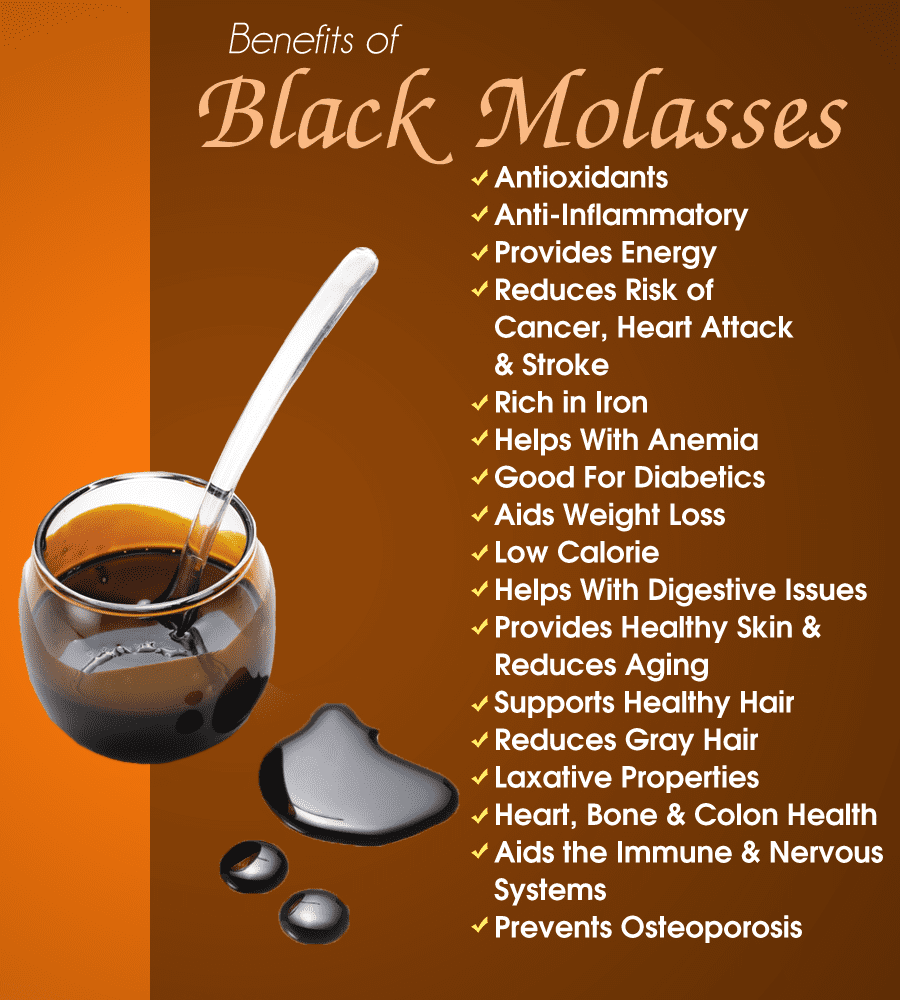
7. Organic Maple Syrup:
This syrup is a dark sap from the xylem of maple trees.� It does contain sucrose, glucose & fructose and therefore has an effect on blood sugar and insulin levels.� Please use in moderation.� Maple syrup contains significant amounts of zinc, calcium, manganese and anti-oxidant phenol vanillin.
One of the better brands on the market is Crown Maple organic maple syrup here

8. Sugar Alcohols:
These include xylitol, glycerol, sorbitol, maltitol, mannitol, and erythritol.� Sugar alcohol is supposed to just pass through the body unrecognized and metabolized. �This causes no blood sugar imbalances and is considered a safe sweetener.� However, many individuals have reported significant gastrointestinal distress that includes cramping, bloating, gas & diarrhea (10).
There are many blends of stevia-erythritol and monk fruit with erythritol. �If you are noticing unpleasant digestive symptoms with these�it is more than likely the sugar alcohols that are causing it. �So be on the lookout.
If you are purchasing erythritol, look for one labeled non-GMO, since this is a corn derived product. �If you have a corn sensitivity, be sure to avoid it. �A good brand is NOW Foods erythritol here�and Xylitol
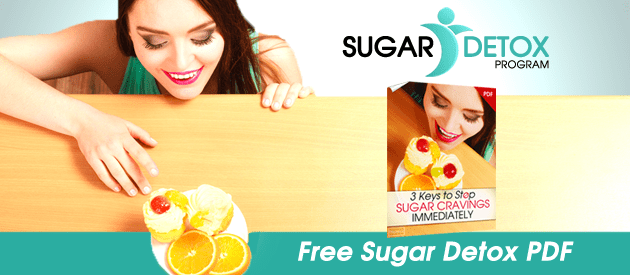
Sugar Detox Free PDF
What Does Dr Jockers Do:
I personally use stevia as my main sweetener. �I prefer the SweetLeaf brand�here�or the Pure Monk fruit.� I am not against using these other sweeteners as we have many of them in our recipes on DrJockers.com, but I would caution to use them in moderation.
We all love a sweet taste but overconsuming them can lead to increased sugar cravings and blood sugar dysregulation. �Be sure to follow the strategies I discuss in this article�on buffering blood sugar naturally. �I also have a complete program designed to help you overcome sugar cravings, lose weight and improve your energy and mental clarity. �It is called the Sugar Detox Program and you can check it out here


Call Today!
Sources for this Article Include:
- W�lwer-Rieck U. The leaves of Stevia rebaudiana (Bertoni), their constituents and the analyses thereof: a review. J Agric Food Chem. 2012 Feb 1;60(4):886-95. PMID: 22250765
- Brahmachari G, Mandal LC, Roy R, Mondal S, Brahmachari AK. Stevioside and related compounds � molecules of pharmaceutical promise: a critical overview. Arch Pharm (Weinheim). 2011 Jan;344(1):5-19. PMID: 21213347
- Shivanna N, Naika M, Khanum F, Kaul VK. Antioxidant, anti-diabetic and renal protective properties of Stevia rebaudiana. J Diabetes Complications. 2013 Mar-Apr;27(2):103-13. PMID: 23140911
- Ferri LA, Alves-Do-Prado W, Yamada SS, Gazola S, Batista MR, Bazotte RB. Investigation of the antihypertensive effect of oral crude stevioside in patients with mild essential hypertension. Phytother Res. 2006 Sep;20(9):732-6. PMID: 16775813
- Xu Q, Chen SY, Deng LD, Feng LP, Huang LZ, Yu RR.Antioxidant effect of mogrosides against oxidative stress induced by palmitic acid in mouse insulinoma NIT-1 cells. Braz J Med Biol Res. 2013 Nov 18;46(11):949-955. PMID: 24270904
- Takasaki M, Konoshima T, Murata Y, Sugiura M, Nishino H, Tokuda H, Matsumoto K, Kasai R, Yamasaki K. Anticarcinogenic activity of natural sweeteners, cucurbitane glycosides, from Momordica grosvenori. Cancer Lett. 2003 Jul 30;198(1):37-42. PMID: 12893428

Comments

by Dr Alex Jimenez DC, APRN, FNP-BC, CFMP, IFMCP | Diets, Nutrition, Wellness
Restaurants are the number-one place to sabotage your diet, according to new research that will surprise no one who�s ever tried to lose weight while eating out.
The year-long study, which was presented at a recent meeting of the American Heart Association, offers insight into tempting foods and the behaviors they trigger. By using a smartphone app, researchers followed 150 overweight people who were trying to stick to a weight-loss plan throughout their daily lives. The people in the study, most of whom were women, checked in up to five times a day and reported where they were, who they were with and whether they had strayed from their eating plan (or were tempted to do so.)
The dieters were also asked to log in anytime they ate (or considered eating) foods or portion sizes they knew were inconsistent with their plan.
Some clear patterns emerged from this deluge of data. People reported the most temptations when they were in a restaurant or bar, or when they were in the presence of other people eating. They noted fewer desires to overeat at home or work, and even fewer when they were in their car or in other people�s homes.
People had about a 60% chance of succumbing to those temptations at restaurants and when they were around others who were eating. Their odds of lapsing at work or in the car were lower, about 40% and 30%, respectively.
�You might think that everybody knows they�re at higher risk when they go into a restaurant, but people go out into these toxic environments and they forget,� says lead author Lora Burke, professor of nursing at the University of Pittsburgh.
People may also see eating out as an excuse to take a break from their diet, she adds. �We remind people that it�s not a diet they can go on and off; it�s a lifestyle,� she says. �It�s okay if they want to go out Friday night and eat wings, but then they need to cut back on Thursday and Saturday.�
Eating at home was a safer bet, though not a foolproof one. People reported fewer food temptations in their homes and those of their friends than they did in restaurants. But when those temptations appeared, people gave in nearly 65% of the time. Even when they were completely alone, people were still likely to lapse about half the time.
Burke says there aren�t yet any commercially available smartphone apps that collect and analyze this type of data for the general public. But such a tool could be valuable for helping people learn and adapt to their diet-related weaknesses, she adds.
�We can go to an individual and say, �These are the high-risk situations you�re vulnerable to, so you need to keep your guard up and practice strategies for sticking with your plan,�� she says. �We could even intervene by sending a message right back to them when they need it, reminding them of why they may need to work really hard.�
Measuring diet in the moment may also provide researchers with data that�s more detailed and accurate. �When we ask people to recall what they ate and how they felt, there are a lot of biases and problems remembering,� says Burke. �This way, we can be there as people are going through weight-loss challenges and find out exactly what they�re feeling, and when.�

Call Today!
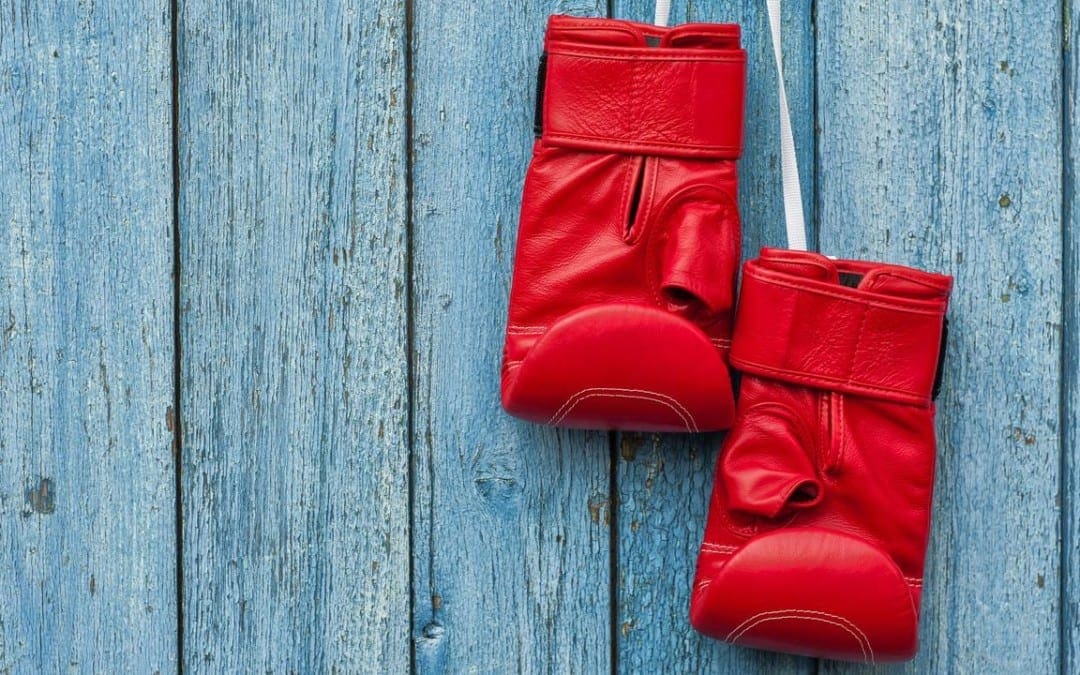
by Dr Alex Jimenez DC, APRN, FNP-BC, CFMP, IFMCP | Fitness, Health, Wellness
This article originally appeared on Time.com.
To get better balance, power and agility, kickboxing is king among workouts. Experts who have studied the sport say nearly everyone—even older people who might shy away from such things—can benefit from throwing a punch.
Unlike most other types of exercise, kickboxing emphasizes powerful movements. Power is different from strength, and for older adults, it’s an even better predictor of mobility and their risk for falls, says Kurt Jackson, an associate professor of neurology and rehab science at the University of Dayton in Ohio. “Pure strength is what a weightlifter uses, but producing power is about both force and speed,” he says.
Kickboxing training tends to involve shorts bouts, two to three minutes long, of intense, repetitive movement—like hitting a punching bag over and over again and kicking and kneeing a pad someone else is holding. “If you look at the research on high-intensity interval training [HIIT], you see these short, intense periods of activity can have big benefits,” he says. Some research shows that even very brief stretches—just 60 seconds—of HIIT can offer the same gains in heart and lung health as 45 minutes of less-intense exercise.
Kickboxing has been shown to improve fitness, power, flexibility and agility, according to a study of healthy men in their twenties who trained three days a week for five weeks. The men in the study improved their upper and lower body power by about 7%, while shaving off more than a second from their time in a 50-meter dash.
It also torches a lot of calories. One study from the American Council on Exercise (ACE) found that the kind of punching-and-kicking combinations used in Tae Bo or “cardio kickboxing” classes burn more than eight calories per minute—about the same amount you’d burn while swimming.
RELATED: Torch Calories With This Total-Body Circuit Workout
The sport can also improve coordination, even in the most extreme cases. Jackson studies the neuromuscular benefits of kickboxing training for people with multiple sclerosis (MS), a condition in which poor communication between the brain and muscles can lead to falls or problems with activities that rely on multitasking, like walking and talking. Kickboxing helps strengthen neuromuscular control in people with the disease in ways that improve balance, mobility and dual-tasking activities, he found.
The benefits likely apply to older adults as well. Kickboxing improves both types of balance that the body requires—anticipatory and reactive—and better balance reduces risk of falls or muscle weakness. “Anticipatory balance is something you use when you can see a need coming, like when you’re stabilizing yourself to reach up into a cupboard,” Jackson says. Reactive balance is the type of mind-muscle coordination you need to catch your balance when you trip, or when life throws some unexpected object your way.
Those skills are useful before you hit old age. If your workout routine relies on lifting weights, running or yoga, your neuromuscular system may not be tuned to handle the kind of dynamic motion required for sports—even the ones you do just a few times a year, like skiing or pickup basketball. “You see these people step or twist wrong and suffer major tears,” Jackson says. “Kickboxing training is a great way to avoid those types of injuries.”
However, the swift whole-body movements required in kickboxing could also cause injuries. Back, knee, hip and shoulder strains are all common among kickboxers, found a study in the Journal of Strength and Conditioning Research.
As with most other forms of vigorous exercise, if you’re a newbie, it’s important to ease into kickboxing gradually. “If you have a bad knee or some other limitation, it’s important to have a coach or physical therapist who knows how to adapt a kickboxing program to your needs, and who will introduce it in a controlled, systematic manner,” Jackson says. Start slow, and you’ll get the most benefits in the end.

by Dr Alex Jimenez DC, APRN, FNP-BC, CFMP, IFMCP | Fitness, Health, Wellness
Pike push-up
A variation of the traditional push-up, the pike push-up zeroes in on your arms and shoulders. You won’t have to worry about what’s your best angle in your wedding photos—your arms will look sexy from every angle.
How to do it: Begin in push-up position with hands in a wide diamond (fingers pointing toward each other).
Bend at waist, lifting hips up and coming onto toes (walk them in a bit if needed) so body forms upside-down “V”. Bend elbows to lower head toward hands.
Press back up; do 10 reps. For even more of a challenge, do 10 reps with right leg raised, then repeat with left leg raised.
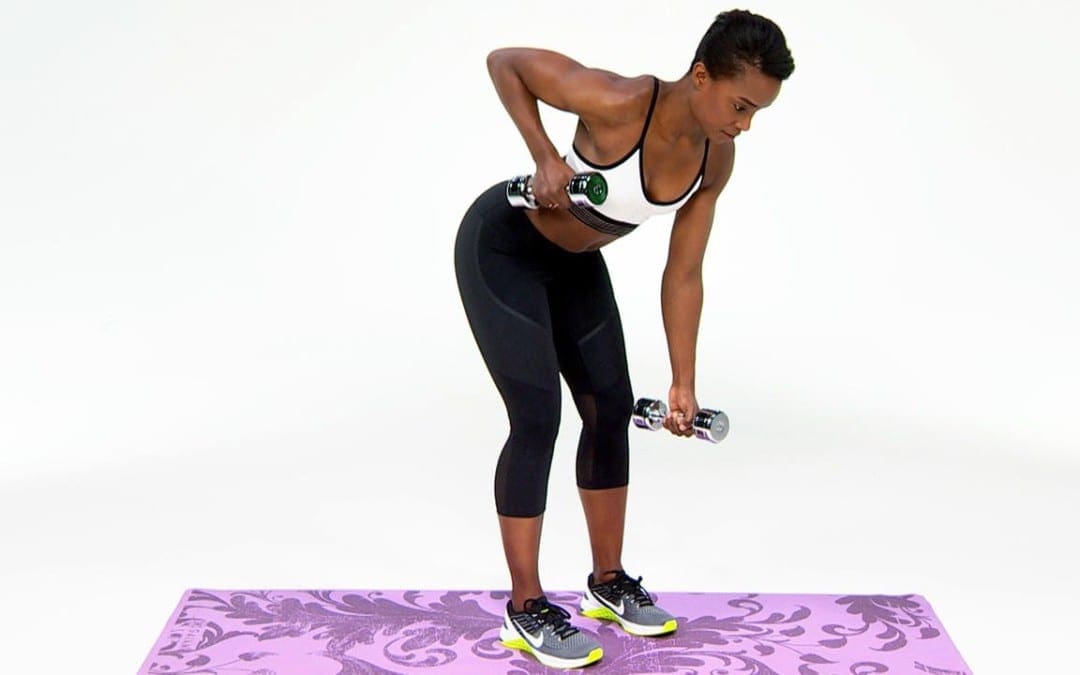
by Dr Alex Jimenez DC, APRN, FNP-BC, CFMP, IFMCP | Fitness, Health, Wellness
Nothing says summer like sleeveless tops and strapless dresses. But the idea of showing so much skin can be daunting. Our solution? Get started early with these six sculpting exercises from Nike trainer Lauren Williams. They will sculpt your upper body stat, so you’ll feel good at your next wedding or outdoor social event. Watch this video and try Lauren’s best get-fit moves for awesome arms, strong shoulders, and a beautiful back.
1. Wide hand walkout: Start in a plank position with your hands directly underneath your shoulders. From here, walk your hands out to a wide push-up position. Return to plank and repeat.
2. Tricep drops: Start in a plank position with your hands slightly in front of your shoulders. Gently drop your elbows to the ground. Return to high plank and repeat.
3. Front and side dumbbell arm raises: Stand tall with a dumbbell in each hand. Raise both to chest level to create a 90-degree angle with your torso, then lower back down. Next, raise both arms out straight to each side on the diagonal, stopping at shoulder level to create an open T shape with the arms, palms facing each other. Lower back down and continue to repeat this combination, moving the arms up and down as they extend in front of you and to the sides.
RELATED: Get Sculpted Shoulders and Toned Arms With Emily Skye’s Upper-Body Workout
4. Bent-over tricep kickbacks: From standing, lean your upper body forward so you’re slightly bent over with a dumbbell in each hand. Bend arms at the elbows until dumbbells reach chest, then straighten arms back out as the weights reach back behind the upper body. Repeat.
5. Bent-over alternating rows: From standing, lean your upper body forward so you’re slightly bent over with a dumbbell in each hand. First raise your right arm up so your elbow bends deeply and the weight is next to your chest. Return arm down to center, then repeat the row movement on the left arm. Continue alternating arms.
6. Inverted push-up: From a downward dog, bend the elbows out wide to create a 90-degree angle, keeping the hips raised high toward the ceiling. Extend arms to return to starting position and repeat push-up.

by Dr Alex Jimenez DC, APRN, FNP-BC, CFMP, IFMCP | Fitness, Health, Wellness
The birth of my twins 13 years ago coincided with the death of any semblance of privacy or personal space.
First there was the nursing, which kept at least one of them dangling off my body for a good part of the day and night. Then, once they could crawl, I was afraid to shut the bathroom door for fear they’d bring a bookshelf down on their heads or eat the refrigerator magnets and get stuck to one another at the belly.
I was a nervous mom to begin with, and the two of them, constantly in motion and mischief, made me anxious and hypervigilant. Unfortunately, my open-door policy with my toddlers led to their begging to sit on my lap, even when I was peeing. I said no, but I was too ridden with working-mom guilt (bad mommy, earning money to support your children!) to boot them out and too exhausted to deal with the ensuing meltdowns if I tried.
I’d gotten myself into a bad pattern in which the kids felt entitled to a 24-hour all-access mommy pass, and I didn’t know how to break it. I loved them to the moon, but I was depleted and not exactly a joy to be around.
That’s when I started saying, “Mommy has to go to the gym.” I’m not sure whether my husband was more thrilled to afford me the free time or to just be rid of me, but it didn’t really matter. For a full hour, I’d go downstairs to our building’s gym and do… whatever. At first, I’d simply sit in the ladies’ room and marvel at what it was like to not have to rush out—pants open, hands unwashed—to avert some impending crisis. I’d noodle around on the bike and then head back upstairs, a saner person for it. Sometimes I made uninterrupted phone calls, and occasionally I cried from the stress of it all.
RELATED: 4 Superpowers of New Moms
But eventually I began to use my time efficiently, doing 40 minutes of cardio and either stretching or using the weight machines. I’d been a regular before I had my kids, so getting back in shape wasn’t hard. And just going to a place where I could have myself all to myself was amazing.
Now my children are teenagers, and when I text them through the closed door of their bedroom to say, “Mommy’s going to the gym,” I’m lucky if I get a thumbs-up emoji in reply. But it’s all good, and the gym is still my sanctuary, a place I will forever associate with blissful escape.

by Dr Alex Jimenez DC, APRN, FNP-BC, CFMP, IFMCP | Chiropractic, Integrative Functional Wellness, Integrative Medicine
A Natural Cholesterol-Lowering Supplement Red Yeast Rice Poses Same Health Risks As Statin Drugs
a new study contends.
Red yeast rice could increase risk of muscle injury or liver damage, Italian researchers reported after reviewing 13 years of patient data.
“These findings raise the hypothesis that the safety profile of red yeast rice is highly similar to that of synthetic statins and warrants further investigations to finally characterize the safety profile of red yeast rice,” the researchers concluded.
American heart experts said it’s not surprising that the researchers discovered adverse reactions to red yeast rice that are similar to those produced by statins.
That’s because one of the compounds in red yeast rice — monacolin K — has the same chemical structure as the statin drug lovastatin, said Dr. Paul Thompson.
“Statins actually exist in nature, in fungi and molds and stuff like that,” said Thompson, an American College of Cardiology fellow. “Patients need to know there is lovastatin in this product.” (Brand names for lovastatin are Mevacor and Altoprev.)
However, the new report only details 55 reports of adverse reactions during the entire study period. To Thompson, this indicates they are “a very rare problem.”
“It’s a tempest in a teapot,” Thompson said of the new study.
Red Yeast Rice Is Concocted From Yeast Grown On Rice
U.S. sales of red yeast rice dietary supplements totaled about $20 million a year in both 2008 and 2009, the most recent years for which data are available, according to the U.S. National Center for Complementary and Integrative Health (NCCIH).
The U.S. Food and Drug Administration views red yeast rice products containing more than trace amounts of monacolin K as unapproved new drugs, since they are chemically identical to lovastatin, and cannot be sold legally as dietary supplements.
But dozens of red yeast rice products remain on the market. And products tested as recently as 2011 have been found to contain monacolin K in substantial amounts, the NCCIH says.
For the new study, the Italian researchers reviewed government data collected on natural health products between April 2002 and September 2015.
Reports of muscle pain came from 19 patients, including some who experienced an increase in levels of creatine phosphokinase, an enzyme released when muscle tissue is damaged, the researchers said.
Thirteen of 14 “serious” cases required hospitalization. Ten patients suffered liver damage, the researchers found.
In addition, 12 patients reported gastrointestinal reactions that included upset stomach, nausea, vomiting and diarrhea.
The researchers noted that muscle pain and liver damage are common side effects of statins, which countless people take to lower their cholesterol and their risk of heart attack and stroke.
Study Doesn’t Directly Tie Red Yeast Rice To Any Of These Health Problems
“There’s no way to be absolutely guaranteed certain that most of these cases were related to the red yeast rice,” he said. Thompson is chief of cardiology at Hartford Hospital in Connecticut.
Patients with high cholesterol often buy red yeast rice over the counter when they’re concerned about the side effects of prescription statins, said Dr. Robert Eckel, a spokesman for the American Heart Association.
“You have to let them know that, well, you’re actually taking a statin,” said Eckel, who’s also a professor at the University of Colorado School of Medicine.
The Council for Responsible Nutrition, a supplement manufacturer trade group, recommends that people talk with their doctor before taking red yeast rice to lower cholesterol.
“For the small percentage of people who may have an adverse response to red yeast rice, a doctor can help to determine whether it can be tolerated, and if not, to seek other alternatives,” said Duffy MacKay. He’s the council’s senior vice president of scientific and regulatory affairs.
Some clinical trials have shown that people with a history of statin intolerance seem to tolerate red yeast rice, Eckel said.
Thompson said he prescribes a fair amount of red yeast rice in his clinic as a way to ease reluctant patients into statin treatment.
But because it’s a supplement, the amount of active ingredient in red yeast rice can vary widely from brand to brand and even batch to batch, Thompson and Eckel said.
“The products are not as well-controlled and the dosages are variable,” Eckel said.
Red yeast rice also can prove expensive if taken regularly, because it isn’t covered by insurance, Thompson said.
“My advice is people should take regular statins, even if they have to take it at very low doses,” Thompson said.
The new study appears in the British Journal of Clinical Pharmacology.
SOURCES: Paul D. Thompson, M.D., chief, cardiology, Hartford Hospital, Hartford, Conn., and fellow, American College of Cardiology; Robert Eckel, M.D., professor, University of Colorado School of Medicine, and spokesman, American Heart Association; Duffy MacKay, senior vice president, scientific and regulatory affairs, Council for Responsible Nutrition; Jan. 19, 2017, British Journal of Clinical Pharmacology, online
News stories are written and provided by HealthDay and do not reflect federal policy, the views of MedlinePlus, the National Library of Medicine, the National Institutes of Health, or the U.S. Department of Health and Human Services.

Call Today!





































